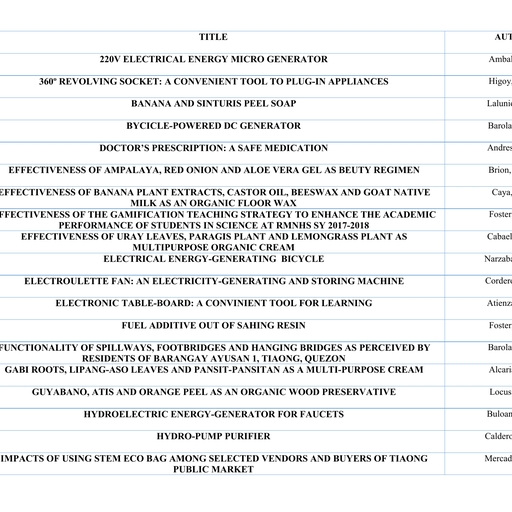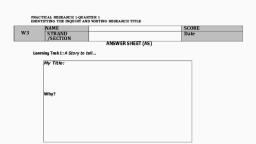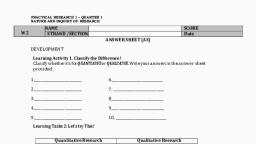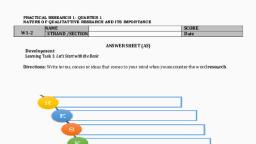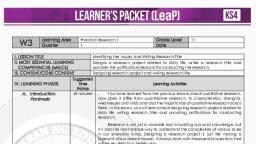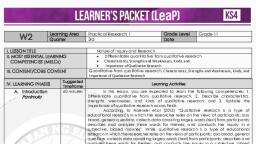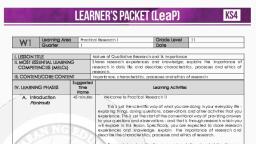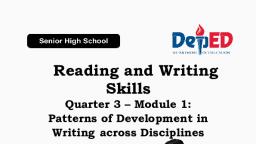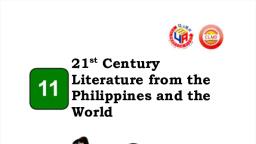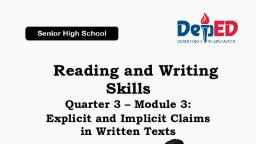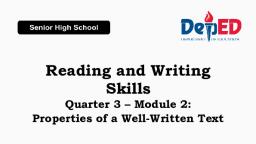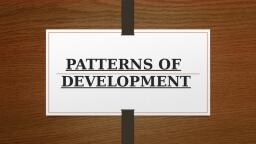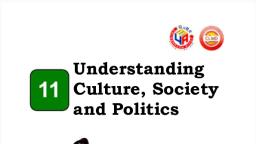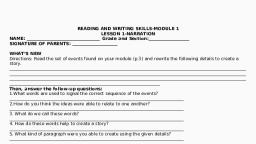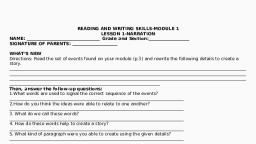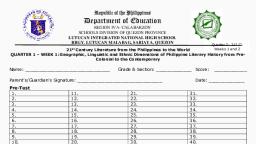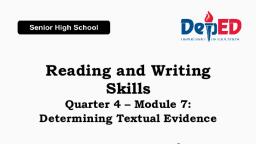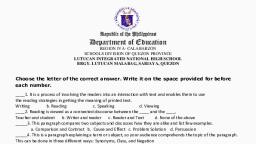Page 1 :
PATTERNS OF DEVELOPMENT
Page 2 :
PATTERN OF DEVELOPMENT, THE LOGICAL ARRANGEMENT OF IDEAS , IT HELPS YOU FOLLOW IDEAS EASILY AND UNDERSTAND A TEXT BETTER.
Page 3 :
SIGNAL WORDS, THESE MAY HELP YOU IDENTIFY THE PATTERN OF DEVELOPMENT, BUT IT IS MORE IMPORTANT THAT YOU UNDERSTAND THE MEANING OF TEXT
Page 4 :
DEFINITION, Using definition an idea to clarify and explain concepts by answering the question “what does it mean?”, This pattern explains the information through the use of illustration examples and descriptions. It may also or more different patterns.
Page 5 :
Signal Words, Is defined as, As defined , Means, Refers to to define, To illustrate
Page 6 :
EXEMPLIFICATION, An exemplification pattern presents the general statement and then provides specific and concrete examples to expound on the main idea, Pay attention to the main idea and specific examples, as they are the most important parts of this pattern.
Page 7 :
Signal words, Afterall, As an example , consider the following , For example, For instance, In other words, In short, Namely, Put another way , Specifically, , Stated differently, That is to be specific, To clarify, To illustrate
Page 8 :
DESCRIPTION �(SENSORY AND SPATIAL), A descriptive pattern basically provides details either a sensory or spatial pattern. Through a sensory patter, ideas are arranged based on one or all of the five senses. A spatial pattern, on the other hand arranges ideas by location or physical space.
Page 9 :
Signal words, Above, Across , Adjacent, Amidst, Along, By, Away from, Below, Here , In, On, Over, Under , Outside, Onto, Near , Into, Between, down, Farther
Page 10 :
CHRONOLOGICAL/�PROCEDURE, A chronological pattern organizes ideas or events according to time. It can be either be in the form of narration or a process. A narration sequences events in the order in which they occurred in time, while a process organizes details based on stages or steps.
Page 11 :
Signal words, About , Before , Afterwards , At, At this point, Before, During, Finally , Later, Prior to , Next, Menawhile, Soon, Then, Today, Tomorrow, When, Today, Since, First, Immediately, Presently, At
Page 12 :
COMPARISON-CONTRAST, A comparison and contrast pattern organizes ideas based on how events, places, people, events and concepts are similar to or different from one another. There are two ways on how ideas can be arranged separately, which involves describing one item first followed by the second item or side by side which means discussing both items based on each point of comparison.
Page 13 :
SIGNAL WORDS (Comparing), Also , As, Both, Equally, In a similar fashion, In comparison, In the same way, Like, Likewise, Similarly, To compare
Page 14 :
SIGNAL WORDS (contrasting), Although, Yet, As opposed to, But, Conversely, Counter, Despite, Even so, Even though, Instead, However, Nevertheless, Nonetheless, Unlike, Whereas, still
Page 15 :
LISTING, A listing pattern organizes ideas using enumeration. Unlike a chronological pattern, listing does not require items to be sequenced chronologically because it does not have the element of time. It basically presents a series of items , ( facts, examples, features, reasons, and tips) that support a main idea. Make sure to pay attention to these essential aspects when writing down your notes.
Page 16 :
Signal Words for Listing, Additionally and then further likewise, Again another furthermore moreover , Along with as well in addition next, Also besides in the same way together with, And equally important
Page 17 :
CLASSIFICATION AND DIVISION, A Classification pattern organizes ideas into categories or divisions based on criteria and standards. This pattern can be used when classifying people, objects, events, things, places, and other items. Make sure to always double-check whether each term is undeniably part of a certain category. Avoid oversimplifying just so you may be able to assign something to a category, as it may result in stereotyping.
Page 18 :
Signal words for classification and Division, Another classified as one kind the last group, Another kind final type the first category the next part
Page 19 :
CAUSE AND EFFECT, A cause and effect pattern organizes details based on the cause, the reason, and the result or consequences of a certain phenomenon. This pattern may discuss both the causes and effects, the causes only, or the effects only.
Page 20 :
Signal words for Causes, As in view of (the fact) owing to (the fact), Because (of the fact) inasmuch as seeing that, Being that one reason since, Due to (the fact that) in view of (the fact), For inasmuch as, For the reason that reason, In that
Page 21 :
PROBLEM - SOLUTION, A problem – solution pattern organizes ideas into problems and proposed solutions. The problem section usually includes the what, who, when, where, why and how of the problem. The other part then presents the majot effects of the problem and the possible solutions to address it, as well as the steps in implementing the solution. Note down these parts when you encounter a problem – solution text.
Page 22 :
Signal words for problem - solution, But the problem, First, second the solution, nonetheless, One reason for the, One solution is, One way is
Page 23 :
PERSUASION, A persuasion pattern organized ideas to show how a set of evidence leads to a logical conclusion or argument. Specifically, this pattern presents the issue, the position, and the supporting evidence that supports the position. Make sure to check these three essential elements while reading a persuasion text.
Page 24 :
Signal words for emphasizing a Point, Again to emphasize, For this reason to repeat , In fact truly, In that case with this in mind, Indeed
Page 25 :
Signal words for concluding and Summarizing, Accordingly in any event since on the whole, All in all in brief in essence Finally, As a result in conclusion in a nutshell, As I have said in short therefore, Consequently in summary thus, Due to inevitably sum up
Page 26 :
Signal words for conceding a point, Admittedly no doubt unquestionably, Assuredly obviously, Certainly of course, Granted to be sure, It is true that true, Needless to say undoubtedly

